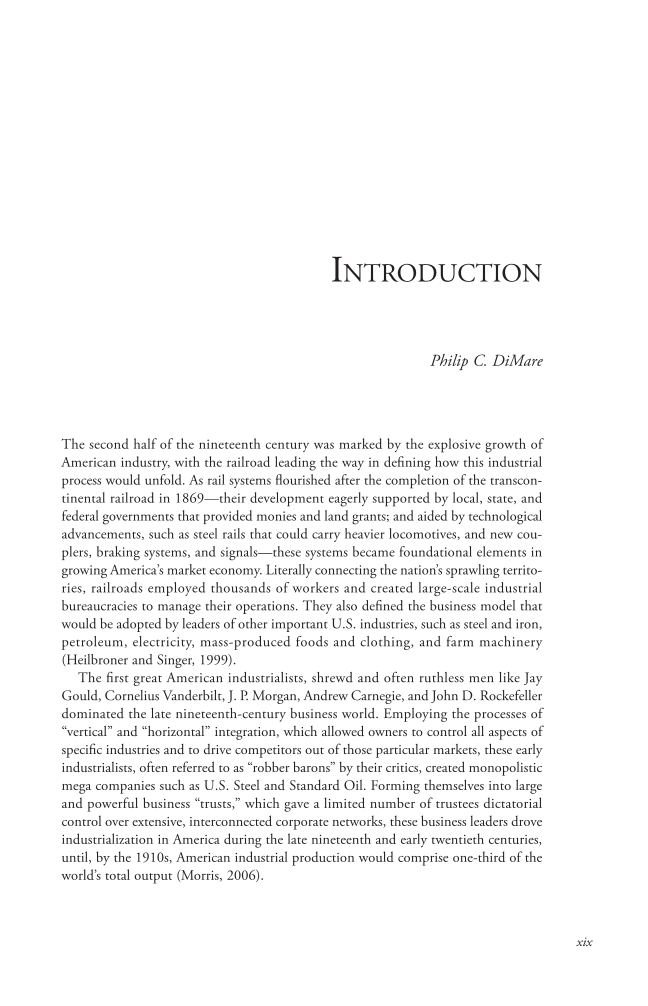INTRODUCTION Philip C. DiMare The second half of the nineteenth century was marked by the explosive growth of American industry, with the railroad leading the way in defining how this industrial process would unfold. As rail systems flourished after the completion of the transcon- tinental railroad in 1869—their development eagerly supported by local, state, and federal governments that provided monies and land grants and aided by technological advancements, such as steel rails that could carry heavier locomotives, and new cou- plers, braking systems, and signals—these systems became foundational elements in growing America’s market economy. Literally connecting the nation’s sprawling territo- ries, railroads employed thousands of workers and created large-scale industrial bureaucracies to manage their operations. They also defined the business model that would be adopted by leaders of other important U.S. industries, such as steel and iron, petroleum, electricity, mass-produced foods and clothing, and farm machinery (Heilbroner and Singer, 1999). The first great American industrialists, shrewd and often ruthless men like Jay Gould, Cornelius Vanderbilt, J. P. Morgan, Andrew Carnegie, and John D. Rockefeller dominated the late nineteenth-century business world. Employing the processes of “vertical” and “horizontal” integration, which allowed owners to control all aspects of specific industries and to drive competitors out of those particular markets, these early industrialists, often referred to as “robber barons” by their critics, created monopolistic mega companies such as U.S. Steel and Standard Oil. Forming themselves into large and powerful business “trusts,” which gave a limited number of trustees dictatorial control over extensive, interconnected corporate networks, these business leaders drove industrialization in America during the late nineteenth and early twentieth centuries, until, by the 1910s, American industrial production would comprise one-third of the world’s total output (Morris, 2006). xix
Document Details My Account Print multiple pages
Print
You have printed 0 times in the last 24 hours.
Your print count will reset on at .
You may print 0 more time(s) before then.
You may print a maximum of 0 pages at a time.

































































































































































































































































































































































































































































































































































































































































































































































































































































































































































































































































































































































































































































































































































































































































































































































